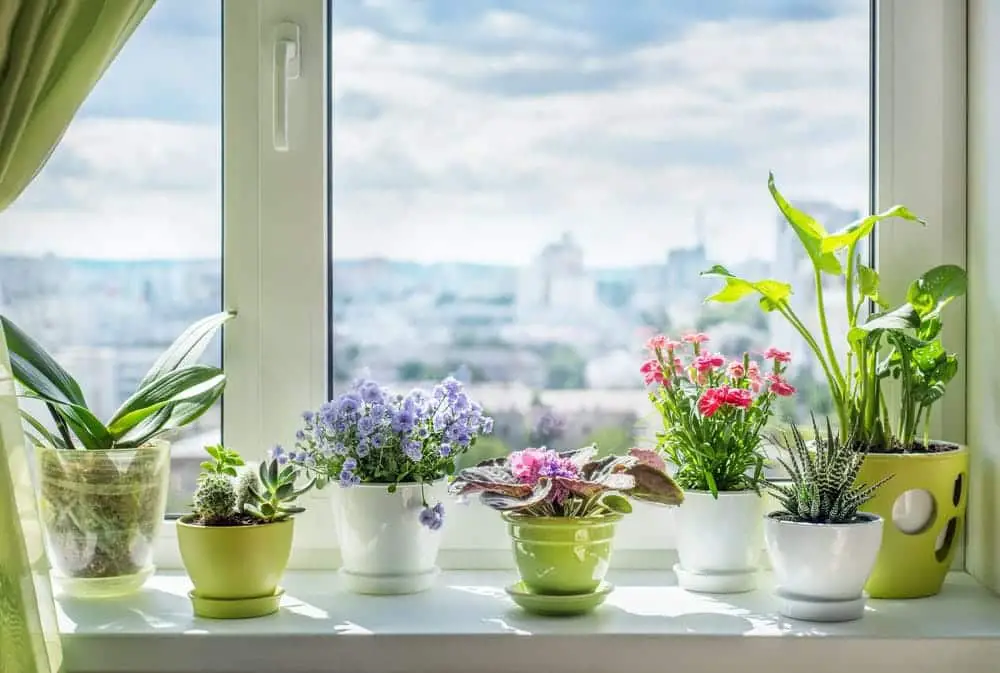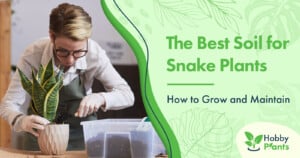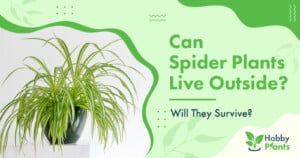Just as people need different amounts of light to feel their best, so do plants. Getting the right sunlight exposure is key to keeping your plants thriving.
There are two types of sunlight: direct and indirect which we will discuss more in this article. Learn which type of light each plant needs and how to provide it using either natural or artificial light sources.
What is Direct and Indirect Light?
If you are new to gardening, you may be wondering just what type of light this means. Often with indirect light, you will see bright as a word that comes before indirect light. There is also something called middle ground lighting.
- Direct light: This is a straightforward concept; your plant is receiving sunlight that is direct and unobstructed. The key here is unobstructed. If you think about it you will realize how many things get in the way of direct sunlight. These could be houses, branches, or anything that is above the plant.
- Indirect light: This is where your indoor plant is in an environment that is filled with light but the rays of the sun are not directly hitting the plant. The reason that the area is still light is that the sun is refracted through or reflects off other objects in the area before it hits the plant. One example is the sunlight shines on a plant through a curtain.
- Bright indirect light: This is the same as indirect light but the plants will cast indistinct blurry shadows. It looks like the light from 800-2000 candles.
- Middle: Light is not always black-and-white because there may be times that you find you plants in an area that receives some indirect and some direct light. This can be an okay area for light for your plant but depends on how much light the plant needs.
What Type of Light Does Your Plant Need
Plants transform the light from the sun into the energy they need to grow and thrive. This is called photosynthesis. If a plant needs full sun, this means they need to be grown outside because they need many hours of direct sunlight.
Indoor plants can generally manage with indirect sunlight. There is enough indirect natural sunlight coming through the window to feed the growing plant.

It is important to know that sunlight is vital for your indoor plants’ survival. The sunlight that comes through the window is never as strong as if they could be outside.
Many times it is not possible to keep a plant close to the window due to space. In the winter, you have to move them away in case there are cold drafts, which can kill a plant. The further you move the plant from the window, the intensity of the sunlight coming in the window drops rapidly.
A move of even two to three feet can drop the intensity by more than 50%. This is something you need to keep in mind when placing your plants in a room, the type of plant it is, and the type of light it needs.
- North facing windows: They give the weakest light intensity.
- South-facing windows: They give you the strongest light intensity.
- East facing windows: These get a lot of early, morning sun.
- West-facing windows: These get a lot of afternoon and evening sun. In the summer this can be very strong.
Direct Sunlight Plants
This generally means unfiltered outdoor sunlight. Some indoor settings can give these plants direct light conditions to enable them to be grown indoors.
One setting would be floor-to-ceiling glass windows. In the northern hemisphere, these plants can be placed in or near a window that is facing south.
In the southern hemisphere, you would need a room that is facing north. Some plants will grow and thrive best if they receive direct sunlight for the part of the day. These plants could be in a room with a west-facing or east-facing window or on covered patios.
- Succulents
- Geraniums
- Begonia
- Madagascar palms
- Aloe Vera
- Hibiscus
- Most focus species including Fiddle Leaf Figs
- Spider plant
Keep reading: Do Snake Plants Need Light? Here’s Their Light Requirements
Indirect Sunlight Plants
Most setting for plants grown indoors only provide indirect sunlight. This can include the faint, indirect light of north-facing windows to the bright indirect sunlight of east-facing windows. Plants that are marked low light or partial shade or full shade will do well in indirect light.
If your plant requires indirect light, you will need to shield them from the harshest rays of the sun. You can do this by putting them from a few inches to a few feet from a window. To filter out more light, you can hang up a sheer curtain.
All plants, even those that state low light have to have some sunlight every day. You can also use those special indoor lights that are designed to provide ultraviolet rays and heat to your plants. Whenever you can, they will need some natural light so they can get the nourishment they need from the sun.
- Most ferns
- African Violets
- Rubber plants
- Palms like bamboo palms
- Most Orchids
- Prayer Plants
- English Ivy
- Monstera
- Snake plants
- Philodendrons
- Peace Lillies
Conclusion
As you can see, there is no right or wrong answer as to which light your plant needs; direct or indirect. It all depends on the plant and where you place it.
Every plant needs sunlight for photosynthesis. Even if they are indoor plants if you have some way of taking them outdoors during the day this would be great. Just make sure that it is not too cold outside because they cannot handle extremely cold temperatures.
Take the time to make sure that your plants are placed in a room where they get the indirect light they need. The winter months will be the hardest, which is why many plants use this as their dormancy time to sort of reenergizing and get ready for the warmer months and new flowers blooming.
Also read: Why Is My Monstera Droopy? And How To Fix It!
Victoria is the owner and main author of hobby plants. She loves spending her free time in her garden planting and taking care of her plants. Victoria hopes you enjoy the content here!
![What Is Bright Indirect Light For Plants? [ANSWERED] What Is Bright Indirect Light For Plants? [ANSWERED]](https://www.hobbyplants.com/wp-content/uploads/2022/08/what-is-bright-indirect-light-300x158.jpg)

![Why Are My Bird of Paradise Leaves Curling? [FIND OUT HERE] Why Are My Bird of Paradise Leaves Curling? [FIND OUT HERE]](https://www.hobbyplants.com/wp-content/uploads/2022/07/bird-of-paradise-leaves-curling-300x158.jpg)
![Why Are My Orchid Leaves Turning Yellow? [Find Out Here] Why Are My Orchid Leaves Turning Yellow? [Find Out Here]](https://www.hobbyplants.com/wp-content/uploads/2022/07/orchid-leaves-turning-yellow-300x158.jpg)
![Why Is My Bamboo Plant Turning Yellow? [Find Out Here] Why Is My Bamboo Plant Turning Yellow? [Find Out Here]](https://www.hobbyplants.com/wp-content/uploads/2022/07/why-is-my-bamboo-turning-yellow-300x158.jpg)
![How To Propagate Bird Of Paradise? [Find Out Here] How To Propagate Bird Of Paradise? [Find Out Here]](https://www.hobbyplants.com/wp-content/uploads/2022/08/how-to-propagate-bird-of-paradise-300x158.jpg)
![Why Is My Aloe Plant Turning Brown? [FIND OUT HERE] Why Is My Aloe Plant Turning Brown? [FIND OUT HERE]](https://www.hobbyplants.com/wp-content/uploads/2022/07/why-is-my-aloe-plant-turning-brown-300x158.jpg)
![How Often Do You Water A Snake Plant? [FIND OUT HERE] How Often Do You Water A Snake Plant? [FIND OUT HERE]](https://www.hobbyplants.com/wp-content/uploads/2022/07/how-often-do-you-water-a-snake-plant-1-300x158.jpg)
![How Big Do Different Types Of Azaleas Get? [Find Out Here] How Big Do Different Types Of Azaleas Get? [Find Out Here]](https://www.hobbyplants.com/wp-content/uploads/2022/09/how-big-do-azaleas-get-300x158.jpg)


